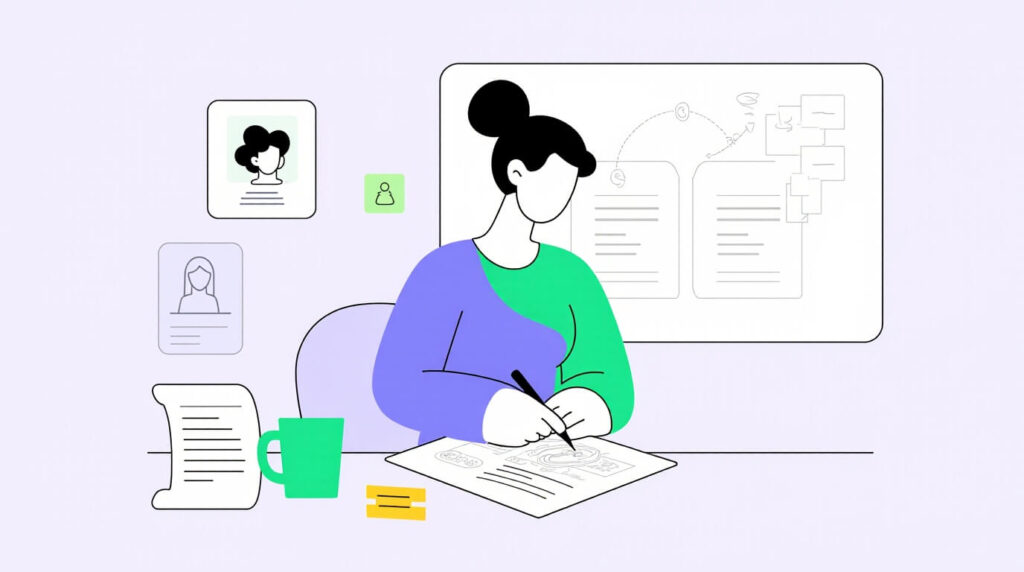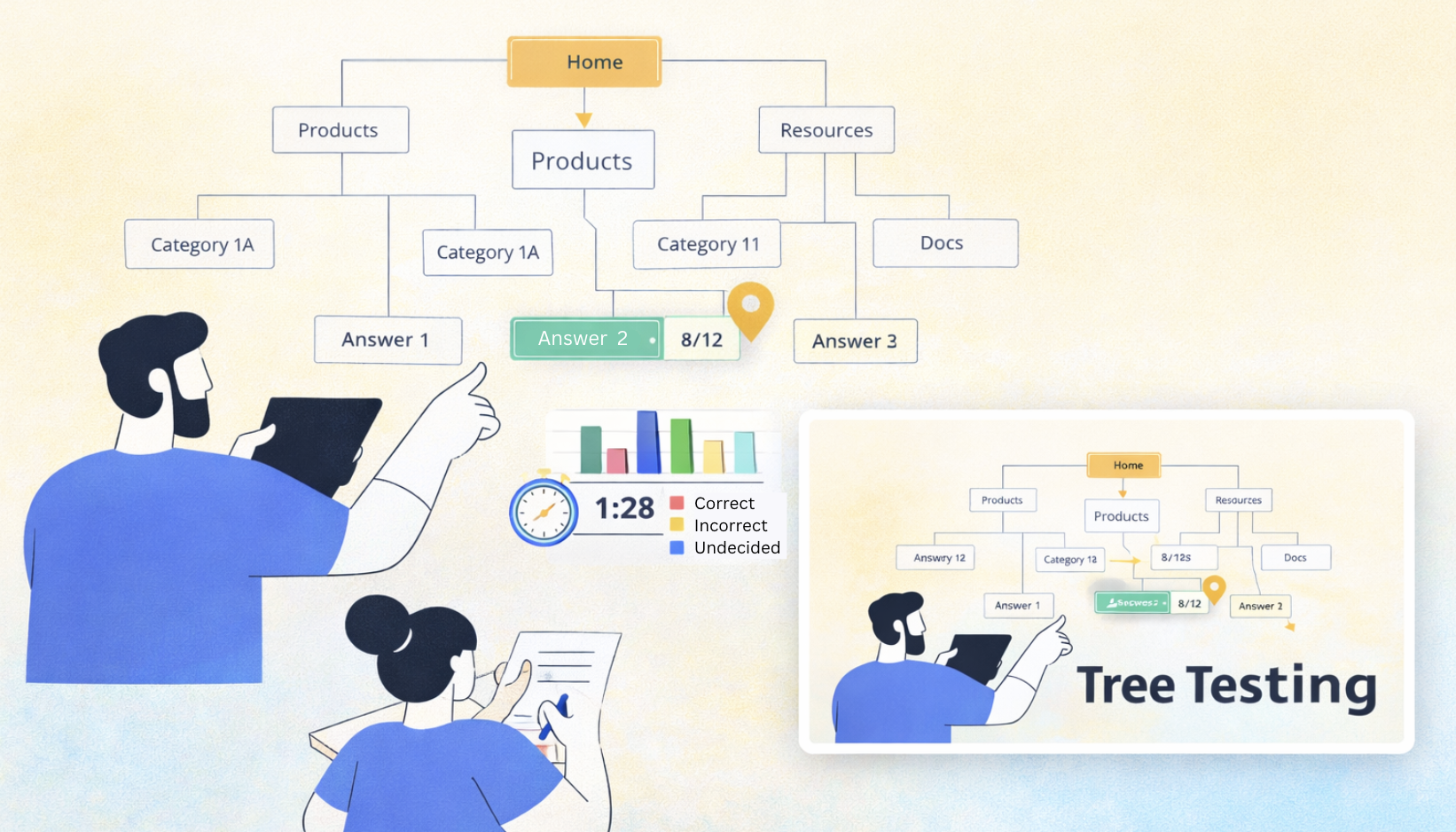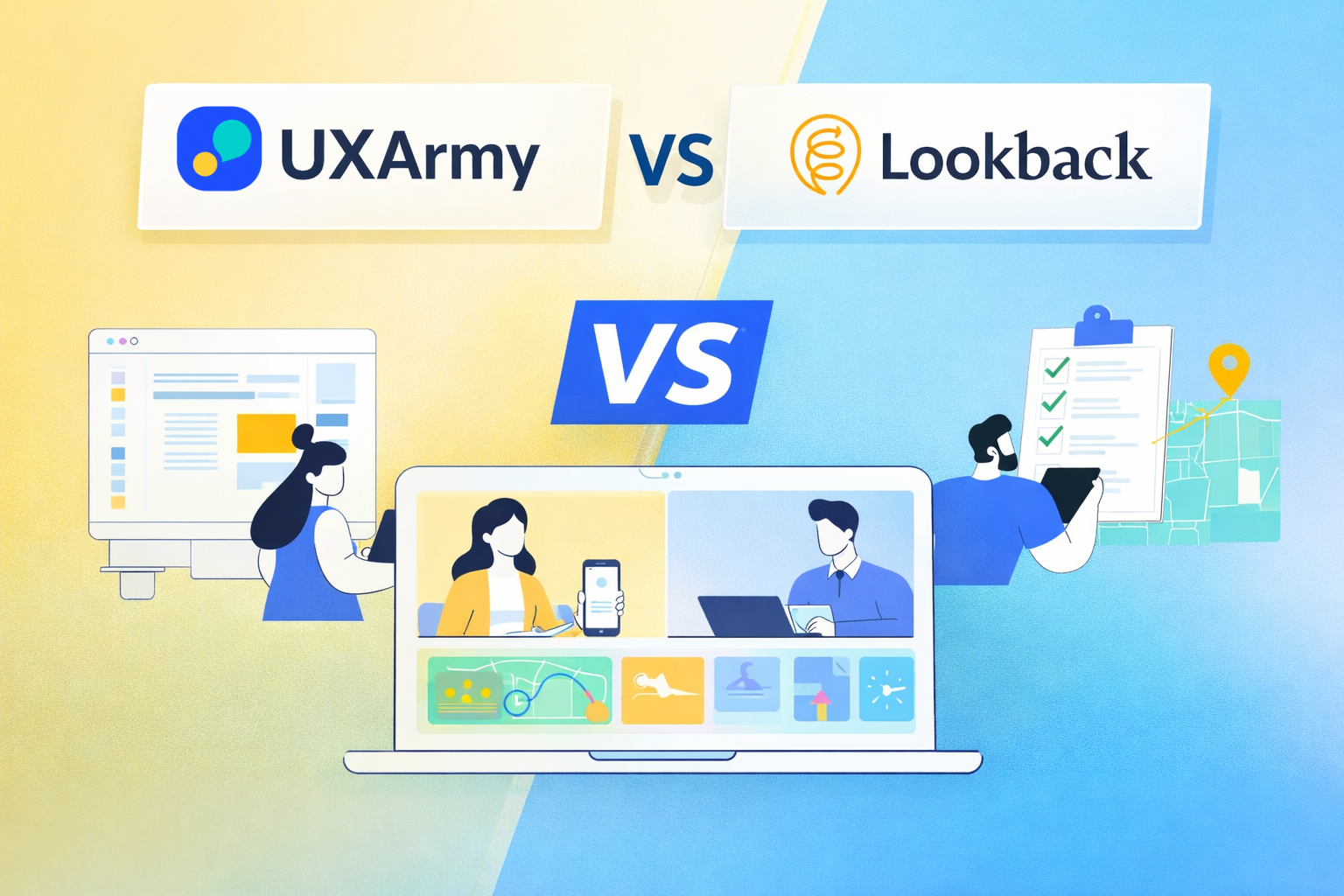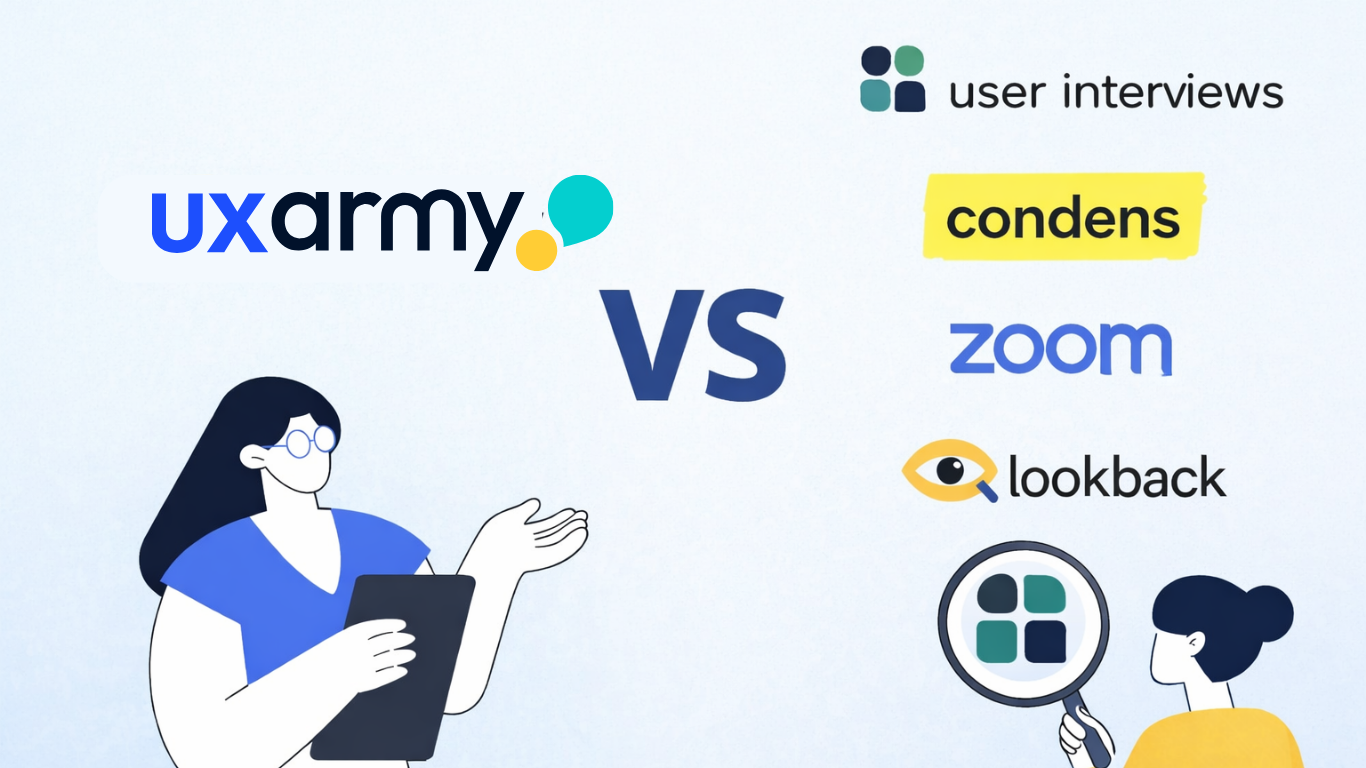Have you ever wondered why some websites or apps just feel right, like you can find what you’re looking for instantly, while others make you want to give up in seconds? The people behind those seamless experiences are UX Designers.
Short for “user experience,” UX design is about crafting how people move through digital products from making sense of the layout, to finding information easily, to completing a task with minimal effort.
If you’re exploring a career in design, UX is one of the most exciting and rewarding fields you can pursue. It’s more than about making screens look good. It’s about understanding how people think, what they need, and how they move through digital spaces.
In this blog, we’ll unpack what a UX Designer really does, the key skills you’ll need, address some common misconceptions, and explore how you can start building a career in this dynamic, people-focused role.
UX vs Product Designer: What’s the Difference?
One of the most common questions people ask when exploring a career in UX Design is “How is UX design different from product design?”
Here’s the short version. All product designers do UX work, but not all UX designers are product designers.
A UX designer is primarily focused on understanding users and improving how they interact with a product. This involves user research, wireframing, usability testing, and refining task flows.
A product designer, on the other hand, is more of a generalist. They own the entire design process from defining user needs to align with business goals, and from ideating and prototyping to final visual execution. Product designers often act as strategic partners to product managers and product owners.
What Does a UX Designer Actually Do?
In smaller teams, a UX designer might do a bit of everything: run user interviews, design interfaces, build prototypes, and test ideas.
In larger organizations, those duties are more clearly divided. UX researchers own much of the user understanding work, while UX designers focus on translating those insights into information architecture, interaction design, and low to mid-fidelity deliverables. Meanwhile, UI designers and visual designers pick up the torch when it’s time to craft the final look and feel of the screens.
UX design starts with understanding the target user
In smaller teams, UX designers often conduct their own interviews, run usability testing, and build persona documents. In larger teams, this work is typically handled by dedicated UX researchers, who specialize in user studies, persona creation, and behavioral analyses. They run interviews, conduct quantitative studies, and present findings.
As a UX designer in larger organizations, you’re more of a consumer and collaborator when it comes to user research. You review the researcher’s findings, ask questions, and apply those insights to design decisions. You might still participate in interviews or watch research sessions, but you’re not responsible for creating the raw data or synthesizing it into personas. Instead, with dedicated UX researchers focusing on the ‘why’ and ‘who’, UX designers concentrate on the ‘how’. This means focusing their effort on translating research into structured, usable designs.
Key deliverables of a UX Designer
Information Architecture and User Flows:
UX designers define the structure and navigation of the experience. They map how people would move through a website or app, define user flows, and design site maps that make sense to both stakeholders and end-users. These deliverables define the backbone of the experience and are used by the whole team.
Interaction Design and Wireframing:
Once user flows are set, UX designers design the actual screens. They create low- and mid-fidelity wireframes, focusing on layout, structure, and interaction patterns. The goal is to clearly express how the product should work, regardless of how it will eventually look. In this phase, UX designers focus more on behavior and layout than aesthetics.
Prototype Creation and Testing:
UX designers often build click-through or interactive prototypes to communicate design ideas to stakeholders and teammates. When it comes to external user studies, while UX researchers might run formal usability studies, it’s usually the UX designers who provide prototypes to be used for the user research. And in some cases, UX designers run quick usability tests themselves to validate design decisions.
Collaboration and Handoff:
The UX designer’s role doesn’t end with wireframes. In larger organizations, collaboration is a core part of the role. UX designers work closely with UI and visual designers to evolve low-fidelity wireframes into fully designed screens. They also collaborate with developers and product owners, creating specifications, providing design reviews, and making sure the design maintains its integrity throughout the build.
What Are the Skills You Need as a UX Designer?
Succeeding as a UX designer requires more than knowing how to draw wireframes or use a tool like Figma. It’s about mastering both hard skills that let you create effective designs, and soft skills that allow you to collaborate, adapt, and advocate for the user. Here’s what truly makes a UX designer effective in the real world.
Technical Skills of a UX Designer
A solid UX designer is expected to have the technical ability to produce high-quality, thoughtful work that moves a product forward. This includes:
- Information Architecture (IA):
UX designers need to structure complex information in ways that feel natural to users. This means knowing how to create logical navigation systems, intuitive site maps, and content hierarchies that reduce cognitive load. - User Flows and Journey Mapping:
Creating user flows and journey maps is key to understanding how people move through a product or service. These visuals help designers and their teams identify pain points and opportunities for improvement. - Wireframing and Prototyping:
The ability to sketch, wireframe, and build interactive prototypes is at the heart of a UX designer’s work. This lets teams test ideas quickly and gather user feedback before investing in development. - Interaction Design:
UX designers need to define how screens, components, and elements behave in response to user actions. This includes thinking through micro-interactions, navigation patterns, and task flows that feel seamless and supportive. - Usability Testing:
While UX researchers often lead formal studies in larger organizations, great UX designers know how to plan simple tests, observe behavior, and use feedback to iterate on their designs. - Design Systems Literacy:
In modern teams, UX designers work within — or contribute to — design systems. This ensures consistency and scalability across products and platforms.
Soft Skills of a UX Designer
If technical skills help you produce good work, soft skills help you make that work matter within a team and for end users.
- Empathy:
The foundation of UX design is understanding the needs, frustrations, and motivations of real users. Empathy allows designers to move beyond assumptions and design solutions that address genuine problems. - Communication:
UX designers don’t work alone. They need to explain design decisions clearly to product managers, developers, stakeholders, and sometimes clients. This includes presenting ideas, justifying choices, and accepting feedback with professionalism. - Collaboration:
Great UX designers thrive in team settings. Whether working with UI designers, developers, product managers, or researchers, success comes from building strong relationships and working toward shared goals. - Problem-Solving:
At its heart, UX design is about solving problems. This means breaking down complex challenges, balancing competing priorities, and finding solutions that work for both users and the business. - Adaptability:
Projects shift. Priorities change. Constraints arise. The best UX designers know how to pivot when necessary based on feedback, usability test results, rather than be defensive. Iteration is part of life. - Critical Thinking:
It’s not enough to follow best practices. A strong UX designer questions assumptions, challenges existing patterns, and seeks to understand the ‘why’ behind every decision. This is a skill that is becoming increasingly important as companies adopt AI into their ways of working, including design.
As Sarah Doody, a leading UX designer, educator, and creator of The UX Portfolio Formula, puts it, “UX design is about uncovering the ‘why’ behind user behavior and making products that work in the real world,” as she explains in The UX Notebook. The best UX designers are those who can ask insightful questions, listen deeply, and design with both precision and purpose.
Salary of UX Designers and Career Outlook
The demand for UX designers has surged globally as businesses continue to invest in creating seamless digital experiences. According to data from Glassdoor (2024), average annual salaries across markets are:
Keep in mind, the bar charts show the mid-point of a salary range for UX designers, from entry to senior. The ranges would be:
- USA: $85,000–$115,000
- Germany: €45,000–€60,000
- France: €40,000–€55,000
- Mexico: MXN $450,000–$600,000
- Canada: CAD $65,000–$90,000
- South Korea: KRW 45,000,000–60,000,000
- Japan: ¥5,000,000–¥7,000,000
- Singapore: SGD $60,000–$85,000
- Hong Kong: HKD $420,000–$580,000
- Brazil: R$100,000–R$150,000
The outlook for UX design is strong. According to the Bureau of Labor Statistics of the USA, roles in UX design and related fields are expected to grow roughly 15–20% over the next decade, making it one of the more resilient and rewarding career paths in technology and design.
Is UX Designer a Senior Role?
“Is a UX designer considered a senior role?” is a question that often comes up among job seekers and career switchers. The short answer is, it depends. Compared to UI designers, UX designers often carry more strategic weight, especially in organizations that prioritize user research and usability. However, the level within an organization depends on the size of the organization, team structure and the scope of responsibilities.
So, who do UX Designers Work Closely With?
This can be a good question to ask to see how senior or junior the position is for that organization. Oftentimes, in larger organizations, UX designers operate within a multi‑disciplinary product team. While many roles across the company affect the work, only a handful of positions collaborate with UX designers on a regular, day‑to‑day basis.
Here’s a few.
Product Designers
Product Designers and UX Designers often work hand‑in‑hand..They balance user needs, business constraints, and technical feasibility, making sure every design decision supports both the user and the company’s objectives. Product designers are usually involved in strategic planning, stakeholder discussions, and product roadmaps.
UI Designers
UI Designers build on the UX Designer’s foundation. They take the wireframes, information architecture, and user flows defined by the UX Designer and transform them into visually polished screens. Compared to UI designers, UX designers often carry more strategic weight, especially in organizations that prioritize user research and usability.
UX Researchers
UX Researchers play a pivotal role in providing actionable user insights. They run studies, interviews, and usability tests, surfacing data that UX Designers use to inform their design decisions. It’s not unusual to have UX Designers review findings, collaborate on interpreting results, and often participate in planning research studies and synthesis sessions.
Developers
Developers collaborate closely with UX Designers throughout the design and build process. While the Product Owner or Product Manager often handles priorities and requirements, UX Designers work directly with developers to clarify interactions, review implementation details, and iterate on feasibility and constraints.
How to Become a UX Designer
What matters in this field is your ability to demonstrate UX thinking and design process through a strong portfolio. That said, certification programs can be a great way to learn the craft, build foundational knowledge, and signal to recruiters that you’re serious about making the switch. If you’re passionate about making digital products more user‑friendly, here’s a roadmap you can follow without breaking the bank.
1. Learn the Fundamentals
Here are some high‑quality free courses and guides available online you can try.
- Google UX Design Professional Certificate (on Coursera): A popular entry‑level program that covers UX design essentials.
- The Interaction Design Foundation (IDF): A huge library of articles and free webinars about UX design and research
- FreeCodeCamp: Provides free articles and guides for design and accessibility.
There are also paid courses that provide certification like Nielsen Norman Group (NN/g) Certifications and Interaction Design Foundation (IDF) Certifications
2. Practice by Redesigning Real Products
Pick an app or site you already use every day. Identify a pain point and try redesigning it. Document every step from user flow, to low‑fidelity wireframes, to interactive prototypes. This approach gives you a concrete case study for your portfolio and sharpens your design thinking.
3. Build a Strong, Story‑Driven Portfolio
A compelling portfolio doesn’t just show screens, it tells a story. Show how you identified a user problem, explored ideas, tested concepts, and arrived at a solution. Hiring managers want to understand how you think, not just what you make. With AI, it’s easy to get an above average design. Take it a step further with user feedback and observations from usability tests to demonstrate your evidence based design thinking process .
4. Get Feedback from other designers
Learning to give and receive feedback is an essential UX skill. Join online communities like the ADPList Slack channel, Designership Slack, or UX Stack Exchange. Participate in critique sessions, review other people’s work, and ask for input on your own. Your comments might just catch the key of a potential hiring manager looking for talent.
5. Highlight Transferable Skills
If you’re making a career shift from fields like marketing, psychology, teaching, or customer support, highlight those connections. Skills like research, communication, storytelling, and problem‑solving are highly valued in UX design. A background in psychology, for example, can give you an edge in understanding user behavior.
6. Stay Curious and Never Stop Learning
UX design is an ever‑evolving field. Stay inspired and informed by following these popular influencers and thought leaders:
- Sarah Doody (@sarahdoody): UX educator and speaker.
- Jared Spool (@jmspool): UX veteran and founder of User Interface Engineering.
- Don Norman (@jnd1er): The “father” of UX design and author of The Design of Everyday Things.
- Nielsen Norman Group (@nngroup): Renowned UX research consultancy with a huge library of free articles and webinars.
Additional free resources worth exploring:
- The Figma YouTube Channel: Regularly shares design tips and tutorials.
- UX Collective (Medium): A huge archive of UX articles and case studies.
- UXArmy YouTube Channel: Great resource on usability tests, UX research
7. Get Some Real‑World Practice
Try volunteering your design skills for a local nonprofit, a friend’s business, or as an intern in a design team. Such real‑world experiences not only help you build your portfolio, but also help you have stories to tell in interviews about working within constraints, dealing with stakeholders, and making design decisions that balance user needs and business objectives.
Conclusion
Becoming a UX designer is about more than mastering a tool, it’s about cultivating a mindset. Become a critical thinker, stay collaborative, stay empathetic, and dedicated to understanding the people you’re designing for. The path can be challenging, but it’s one of the most rewarding careers you can pursue, and hanks to the wealth of free resources and passionate communities available online, it’s never been more accessible to those starting out.
Frequently asked questions
Is a UX designer an IT job?
Not really. While UX designers work alongside developers and IT professionals, their focus is more on people and design than on coding or infrastructure. UX design is primarily about understanding user behavior, creating seamless experiences, and designing interfaces that people find easy and enjoyable to use. It blends psychology, design, and research, making it a multidisciplinary role.
How is UX design different from product design?
UX design focuses on enhancing user satisfaction by improving usability, accessibility, and interaction within digital products, while product design takes a broader approach, aligning user needs with business goals through end-to-end design strategy and execution.
How much does a UX designer make?
User experience designers are in high demand across the industry, and you can expect to earn a good living as a practitioner. Based on Glassdoor’s salary estimates, The average UI/UX design starting salary in the US in 2023 is $75,057 /yr. Depending on your role, you can expect anywhere from $90,000 to $128,000 /yr in the United States of America.u003cbru003eTo know more about how much you can earn in your region, see this:u003cbru003eu003ca href=u0022https://www.interaction-design.org/literature/article/ui-ux-designer-salaries-how-much-can-i-earn-in-2023u0022u003eUI u0026amp; UX Designer Salaries: How Much Can I Earnu003c/au003e
Can you work remotely as a UX designer?
Yes, you can work remotely as a UX designer. Many companies offer remote UX design roles, as key tasks like user research, wireframing, prototyping, and collaboration can be effectively done using tools like Figma, Miro, and Zoom.
Does UX design require coding?
Generally speaking, UX designers do not need to write code as part of their day-to-day tasks. While not necessary for getting a job, having a basic understanding of application development languages like CSS, JavaScript, and HTML equips you to better communicate with developers and might give you a competitive edge in your job search.
Who gets paid more, UX or UI?
UX designer salaries are typically higher than those of UI designers. According to the 2022 Salary Guide by digital creative staffing agency Onward Search, more than half of UX designers in the US reported making at least $104,200. That figure was $90,000 for UI designer





